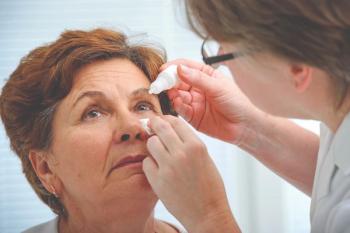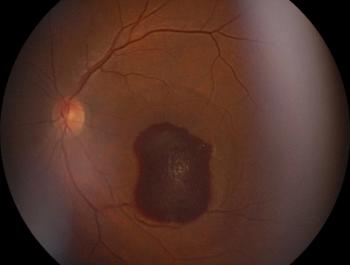
Setting sail on the seas of eye care education: What you missed at Academy 2025
The latest updates on myopia management, contact lenses, and dry eye were discussed in Boston.
This year’s American Academy of Optometry (AAOpt) Academy 2025 meeting was revolutionary in its own right in Boston, Massachusetts, running from October 8 to 11, 2025. According to Kayla Ritten, MBA, CAE, vice president of membership and communications with AAOpt, Academy 2025 registration numbers were less than 100 short of its Academy 2022 meeting, which ran adjacent to AAOpt’s Centennial Celebration in San Diego, California, in 2022. This year’s Academy brought in 8182 registrants, with the centennial meeting bringing in 8246 registrants.
This year, CME hours continued in the evening, providing optometrists with an expanded selection of times to choose from, in addition to longer 2-hour sessions and quick 10-minute Rapid Fire sessions. From myopia management to scleral lens fittings, the sessions provided a broad scope of specialties from which to receive updates with the latest clinical pearls and findings. In case you missed them, here are some of the takeaways from Academy 2025.
The accelerating world of myopia management
With the recent FDA authorization of Essilor Stellest spectacle lenses in September 2025, EssilorLuxottica representatives sat down with Optometry Times to express their excitement about the lens approval and what is to come in terms of manufacturing and delivery timelines. Monica Jong, PhD, BOptom, head of medical affairs for North America for the company, described the lens technology and design as featuring a central 9-mm clear zone for myopia correction, which is surrounded by 11 rings containing 1021 contiguous, highly aspherical lenslets.
“This is a real breakthrough because previously, there has not been any myopia control spectacle available,” Jong said. “There have been orthokeratology and myopia control spectacle contact lenses as well as a drug option. This means that millions of children who would have otherwise missed out on myopia management are now going to be able to have an accessible treatment available to them that is easy to prescribe, easy to use, and fits in with their lifestyle as well.”
2025 has also proven to be a big year for SightGlass Vision, whose Diffusion Optics Technology spectacle lenses were granted breakthrough device designation by the FDA in February. At the Academy meeting, the company provided research results from an 18-month Chinese study that demonstrated that 50% to 57% of patients showed no meaningful progression of myopia over the entire study period.
Andrew Sedgwick, SightGlass CEO, stated that the company’s eyes are set on adding the US to its international footprint that currently includes Canada, Israel, Iberia, and a pilot program in the Netherlands. “We’re very focused right now on our international development, out of necessity,” Sedgwick said.
Additional myopia management news comes in the form of 2 poster presentations given by Jennifer Harthan, OD, FAAO, FSLS, on the Arise orthokeratology lens. The posters, titled "Safety and Effectiveness of the Arise Orthokeratology Lens With Toric Posterior Peripheral Curves in Patients With Myopia: Open-Label Study" and "Fit and Stability of the Arise Orthokeratology Lens With Toric Posterior Peripheral Curves in Patients With Myopia," focused on fit, stability, safety, and efficacy through a multicenter, open-label study. The unique torque peripheral curve system demonstrated exceptional stability, providing consistent vision, comfort, and fit at critical intervals: 1 day, 1 week, 1 month, and 3 months post fitting. Notably, no serious adverse events were reported during the study, underscoring the lens design's safety profile.
Contact lens research takes the forefront
Johnson & Johnson and the Contact Lens Institute (CLI) were a few of the industry leaders at Academy 2025 that shone a light on recent research and clinical trial studies. On behalf of Johnson & Johnson, Giovanna Olivares, OD, presented 2 posters on the company’s behalf, titled “Patient Reported Vision Outcomes for 2 Daily Disposable Toric Soft Contact Lenses” and “Evaluation of Treatment Effects in a Study Comparing 2 Daily Disposable Toric Soft Contact Lenses.” The first poster presented research that found that over half (62%) of patients preferred the Acuvue Oasys lens for overall vision whereas 18% of patients preferred Dailies Total1 for Astigmatism. The second poster found that Acuvue Oasys Max 1-Day for Astigmatism was preferred by patients 3.3 times more in comparison with Dailies Total1 for Astigmatism.
“Over the next decades, I think…this contact lens offers a light-filtering technology as well as a tear-stabilizing technology," Olivares said. "I think as we're going into the future, we're going to see that our patients are going to be using their eyes even in more advanced or more challenging environments.”
For CLI, recent research on the generational wants, needs, and differences in terms of contact lens wear among Gen Z, Gen X, and millennial populations was discussed during the meeting. For Gen Z patients, appearance and freedom from glasses are primary motivators. This generation is characterized by heavy digital device usage, short attention spans, and a preference for quick, bite-sized information. Shelby Brogdon, OD, recommended personalizing patient care by understanding individual lifestyles. She suggested exploring patients' hobbies, activities, and specific needs—whether they're athletes or gamers or have unique visual requirements.
Additionally, Erin Rueff, OD, PhD, FAAO, discussed contact lens wear for people with presbyopia in her lecture “Finding Presbyopic Contact Lens Success.” She noted that patients aged 60 to 70 years are highly active and require comprehensive vision solutions, with multifocal lenses now offering superior vision correction compared with traditional monovision.
Shining light on the severity of dry eye disease
Dry eye remained a popular topic at Academy 2025, with a flurry of poster presentations and lectures that help optometrists keep up to date in the fast-growing specialty. Cecelia Koetting, OD, FAAO, DipABO, was one of many presenting on dry eye with her poster titled “Perioperative Use of Perfluorohexyloctane Ophthalmic Solution in Patients With Dry Eye Disease Undergoing Cataract Surgery.” Patients in the study underwent baseline biometry readings before using perfluorohexyloctane (which was used for 30 days), proceeded with cataract surgery, stopped using the drop for another 30 days, and then resumed use for an additional 30 days. No significant changes in patients' intraocular lens calculations or postoperative refraction were reported. However, the research aligned with findings in previous FDA phase 3 trials, revealing statistically and clinically significant improvements in 2 key areas: corneal fluorescein staining and patient Symptom Assessment In Dry Eye scores. These findings mirrored those of the earlier trials that ultimately led to the substance's approval.
In her presentation “Neurologic Dry Eye: What, Like It’s Hard?”, Jacqueline Theis, OD, FAAO, reminded attendees that all dry eye has a neurologic component. Thus, a key challenge in dry eye treatment is the frequent mismatch between patient symptoms and clinical signs. Patients may experience extreme symptoms with minimal observable signs or, conversely, have significant clinical indicators without perceiving discomfort.
Joseph Allen, OD, FAAO, Dipl ABO, delivered a lecture titled “Low-Level Light Therapy: Navigating the Science and Applications of Photobiomodulation in Eye Care,” which discussed the scientific and clinical implications of red light therapy in eye care. He stated that findings from studies have shown promising results in both slowing myopia progression and potentially preventing its development in premyopic children. However, Allen emphasized critical safety concerns that accompany these promising findings. Some case reports have documented troubling adverse effects, including reduced vision and decreased cone cell density in pediatric patients. These findings have prompted researchers and clinicians to advocate for a more cautious approach, recommending further investigation before widespread adoption.
Newsletter
Want more insights like this? Subscribe to Optometry Times and get clinical pearls and practice tips delivered straight to your inbox.



















































.png)


